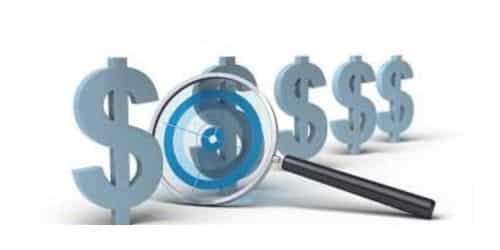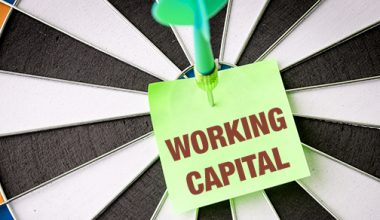Cost analysis is a useful tool for improving project management and forecasting future financial success for a business. Cost analysis is a tool used by financial experts to determine how much revenue a project can earn in relation to its overall expenditures. It may be useful to understand more about cost analysis and how to calculate it if you work in finance or project management. In this post, we will learn more about the benefit of cost analysis, the profit volume example, and how to execute the analysis.
Cost Analysis
Cost analysis, commonly referred to as cost-benefit analysis, is the process of figuring out the prospective profits from a circumstance or project and deducting the overall cost involved in finishing it. It analyzes the project’s cost to its anticipated financial advantages and forecasts the profit made from the project. Cost analysis is a common tool used by finance experts to illustrate to clients their prospective profits from a project.
Why is Cost Analysis Important?
Here are a few factors supporting the significance of cost analysis for businesses:
#1. Makes Decisions Easier
By enabling professionals to compare costs and returns, cost analysis enables them to make judgments about upcoming projects. Professionals might alter the project as needed to boost earnings or reduce expenses if the project cost exceeds the expected profits.
#2. Keeps Interested Parties Informed
Companies make careful to incorporate stakeholders in the decision-making process by using cost analysis. Because they support a firm and show interest in projects, stakeholders are an essential component of corporate operations. Companies must therefore keep them updated on pertinent performance information.
#3. Solves Issues
Finding answers to financial issues might be aided by cost analysis. Cost analysis can help a business stay organized and obtain a better grasp of its finances and upcoming initiatives if it is having trouble managing projects.
How to Calculate Cost Analysis
The following procedures can be used to determine a cost analysis ratio:
#1. Ascertain Why You Require a Cost Analysis.
Depending on why you’re using a cost analysis, you can use it in different ways. To better comprehend the variables you can utilize, decide why a cost analysis is necessary before you begin.
#2. Analyze the Cost
The next step is to assess the project’s associated costs. To make them available for the next actions, it could be beneficial to list them all. Make careful to account for any unforeseen project expenditures as well as potential future changes in costs.
#3. Compare to Previous Projects
Compare your present cost analysis study to earlier ones as the next stage. Using this data, you can find comparable expenses and calculations to include in your study. You may make sure you have enough data to generate a realistic idea of your expenditures and income by comparing your data to comparable cost analysis initiatives.
#4. List all Parties Involved
To determine an appropriate cost estimate, it is crucial to identify the project’s stakeholders. Stakeholders are people or organizations who are interested in the project. They might provide funds or time for the project’s planning.
#5. List the Possible Advantages
The prospective advantages of a project should then be listed, including any predicted financial gains. It’s crucial to assign a specific value to any project benefits that go beyond pure financial gain.
#6. Subtract the Expense From the Result.
The next step is to calculate your cost analysis ratio by deducting the project’s overall costs from its anticipated benefits.
#7. Describe Your Findings.
Interpreting the findings will help you determine whether you want to move forward with the project once you know the value of your cost analysis. In general, it’s a good idea to continue with the project if your results satisfy the objective of the income you want to earn from it.
Benefits Cost Analysis
A cost-benefit analysis is a technique that can assist you in determining whether a specific course of action is worthwhile or in selecting the most advantageous course of action among numerous options. In order to evaluate whether it makes sense to pursue an action, this method typically entails putting a monetary value on the various benefits and costs related to doing so.
Before making important business decisions, firms or leadership teams find that using this research gives them the information they need to make better choices. It is usually desirable to pursue a course of action if the advantages outweigh the disadvantages. If the costs are higher, they may be able to review several elements of their strategy, such as their budget and timeframe, to determine whether they can cut costs or boost profits.
When to Use a Cost-Benefit Analysis
When considering whether to take a certain step, such as introducing a new product line, rebranding an existing line, opening a new location, or hiring more personnel, a cost-benefit analysis is utilized. Also, when the action involves actual financial expenses rather than just estimates, this technique is most beneficial.
Here are some additional situations where a cost-benefit analysis might be useful:
- When creating a fresh business method or approach
- Choosing to approve or reject a new project
- When estimating the potential effects of new corporate policies
- When deciding how to allocate money or what to buy for a project
- Considering the organization’s structure after adjustments
People can conduct a cost-benefit analysis outside of business, such as when determining whether to relocate and accept a new job. In this case, they can weigh the potential increase in income from the new employment against the cost of living in the new place to determine whether accepting the post is the right move.
Advantages of a Cost-Benefit Analysis
A CBA’s primary objective is to assist decision-makers in finding areas where money and resources might be saved. Additionally, it offers the following benefits:
#1. Makes Decisions Better
The majority of business choices require a cost-benefit analysis. It can assist you in making wiser, more knowledgeable decisions, such as whether to move forward with a project. It aids experts in comparing the expenses and advantages of a project to determine whether it is worthwhile and has sufficient financial incentives.
#2. Improves Comprehension of Project Objectives
You can better comprehend a company’s objectives and how they relate to one another by performing a cost-benefit analysis. This can be helpful if there are numerous stakeholders involved in a project or if several projects are active at the same time. It enables everyone involved to communicate their aims and objectives so that they may function as a cohesive team.
#3. Aids in Information Comparison
A firm may carry out a cost-benefit analysis to ascertain whether a long-term investment will be lucrative. You can analyze the data you compile from various sources using a cost-benefit analysis, allowing you to use the most pertinent data to make an informed conclusion.
#4. Raises the Likelihood of Success
By providing you with more knowledge about your project and how to make sure it accomplishes its goals, cost-benefit assessments can help you succeed. You can decide whether a project has a strong likelihood of success before you start it by analyzing the costs of carrying out the project and how they compare to the benefits it offers.
#5. Enables Better Project Planning
Both long-term planning and short-term projects can be built around the findings of a cost-benefit analysis. It enables organizations to choose the most effective ways to accomplish a project and to review and modify their plans as necessary to keep it on track. Business teams can use this to assess the productivity, efficiency, and effectiveness of several courses of action before making a choice. It takes into account both financial and non-financial costs and benefits, which aids managers in determining how to distribute resources among various projects and activities.
Benefit Cost Analysis Example
Here is an example of how a cost-benefit analysis would appear for a startup business wanting to recruit outside assistance. For instance, Serah is opening an online store and is debating hiring a web designer to develop her brand. The additional website traffic from this service, which costs £500, could result in an increase in income of $1000. He computes the following using the formula:
£1000 – £500 = £500
This estimate indicates that there is a chance for her company to make £500 in profit, so she decides to go ahead and hire a web designer.
Profit Volume Cost Analysis
Businesses use the cost-volume-profit formula to determine how many units of a product they must sell to make a profit or break even. This formula is used by businesses to estimate how changes in sales volume, variable costs, and fixed costs can affect a company’s earnings. Numerous equations for cost, price, and a few other factors that experts depict on a graph must be used in a CVP analysis. They might learn how to enhance their performance as a result of this. The formula for CVP break-even sales volume is:
Break-even sales volume = FC / CM
Fixed expenses are denoted by “FC” in this calculation, and contribution margin per unit is denoted by “CM”. You deduct all variable costs from sales revenue in order to calculate the contribution margin per unit. Add the fixed component to the intended profit per unit to determine the business’s target sales volume.
Components of CVP analysis
There are several parts to the CVP study, and each one requires distinct calculations. These elements include:
- Fixed costs: These are expenses that remain constant regardless of changes in sales or the production of a product. Rent and advertising are two instances of fixed costs.
- Variable costs: Costs that vary according on the quantity of a product are known as variable costs. Raw materials and direct labor are two examples of variable costs.
- Contribution margin: The difference between a company’s total revenue and all of its variable costs is known as the contribution margin.
- Contribution ratio: This is the percentage representation of the contribution margin.
- Sales volume: is the total amount of goods that a company sells over a given time frame.
- Break-even point: This is the point at which all costs and revenues are equal, i.e. when neither a profit nor a loss is being made by the company.
- Selling price: The price a consumer pays for the goods is known as the selling price.
How to Calculate a Cost-Volume-Profit Analysis
The steps for performing a cost-volume-profit analysis are as follows:
#1. Determine the Total Fixed Costs.
Add up expenses for marketing, salaries, rent, and insurance to get the company’s overall fixed costs. There is a straightforward formula you can employ as well. Before beginning to calculate all the manufacturing costs, first, distinguish between fixed and variable expenses.
The formula to determine the total fixed costs is as follows:
Fixed costs = (total cost of production − (variable cost per unit x number of units produced)
#2. Establish the Product’s Selling Price.
You can determine whether the selling price per unit can help the company generate the targeted profits using the cost-volume-profit analysis. By comparing the variable costs and net sales, you may ascertain the product’s selling price.
#3. The Variable Cost Per Unit Should be Calculated.
Variable costs can go up or down. For instance, if a corporation produces more goods, variable expenses rise. Variable costs go down when fewer products are produced.
#4. Calculate the Contribution Margin Ratio and Contribution Margin
You must first deduct the variable cost per unit from the unit selling price in order to calculate the contribution margin. You can determine how much profit is left over after subtracting the difference to pay for fixed costs.
#5. Analyze the Costs, Volumes, and Profits.
The cost-volume-profit analysis is carried out using the prior calculations. To perform the CVP analysis and establish how many units a company has to sell to make the targeted profitability, there are numerous formulae available. The break-even sales volume formula is a popular one.
Break-even sales volume = fixed costs / (price − variable costs)
How to Do a Cost-Benefit Analysis
By doing a CBA in the manner described below:
#1. List All the Expenses and Advantages.
List all the costs and advantages as the first step in any cost-benefit analysis. You can start by imagining every possible outcome of your decision during a brainstorming session. After that, you can sort each item into one of two categories:
- Costs: Anything that would be charged if you choose this course of action. For instance, the price of a car would also include gas, insurance, upkeep, and repairs.
- Benefits: Anything that would be advantageous to you if you selected this course of action. The benefits of purchasing a car may include time savings and easy commuting to work or school.
#2. Assign a Dollar Value to the Costs
The next stage in doing a cost-benefit analysis is to give the costs a monetary value. Instead of allocating one value per year, it may make more sense in some cases to spread your entire cost across its lifespan.
#3. Put a Price on the Advantages.
You can still put arbitrary dollar numbers on the intangible benefits a choice might offer, even if it doesn’t directly help you financially.
#4. Comparing Prices and Advantages
You can compare your costs and benefits after totaling them all up to determine which is bigger. You might choose not to make the purchase if the added costs outweigh the advantages. In contrast, you might consider purchasing alternatives to reduce your expenditures relative to the advantages.
What Are the Three Types of Cost Analysis?
To identify and quantify the costs of a project or program, cost analysis methods are utilized.
What Is a Cost Analysis Tool?
Cost-feasibility, cost-effectiveness, cost-benefit (sometimes known as benefit-cost), and cost-utility are the four primary categories of cost analysis.
Related Posts
- FIXED VS VARIABLE COSTS: What’s the Difference?
- Financial Plan: Easy Steps To Make a Solid Financial Plan
- Policy Making: Definition, Process, Cycle, System (+Free Tips)
- Variable Costs: Definition, Examples, Formulas & How to Calculate It






